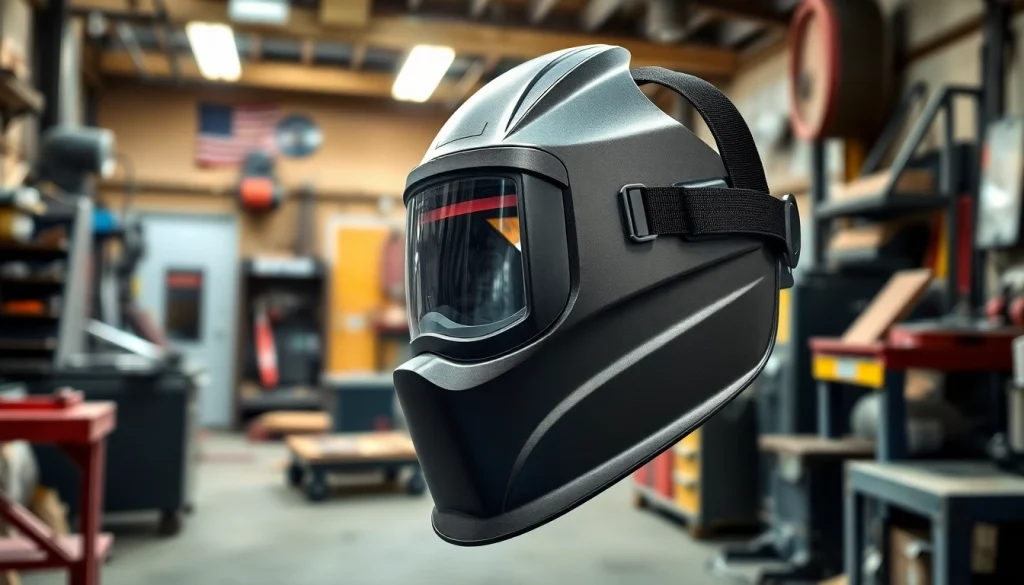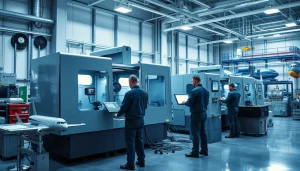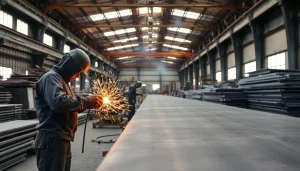Choosing the Right Welding Mask for Safety and Performance

Understanding Welding Masks
Welding is a skill that requires not only expertise but also the right protective equipment. At the forefront of this protective gear is the welding mask, an essential element for anyone engaged in welding activities. These masks serve multiple purposes: they protect the welder’s eyes from harmful rays, shield the face from sparks and heat, and ensure comfort during the welding process. Understanding the various types and features of welding masks, their benefits, and proper maintenance can significantly enhance safety and performance in welding operations.
What is a Welding Mask?
A welding mask or helmet is a specialized piece of Personal Protective Equipment (PPE) designed to protect the welder’s face, neck, and eyes from the intense light and heat produced during welding. Unlike standard face shields, welding masks are equipped with tinted lenses that adjust based on the brightness of the welding arc, ensuring the eyeballs are shielded from ultraviolet (UV) and infrared (IR) radiation. They also provide coverage from flying debris, sparks, and other potential hazards typically encountered in welding environments.
Key Features of Welding Masks
Welding masks come with a range of features designed to enhance user safety and performance:
- Auto-Darkening Filters (ADF): These lenses automatically adjust their tint based on the brightness of the welding arc, allowing the welder to see clearly before and after the actual welding process.
- Adjustable Headgear: Proper fit is crucial. Many modern welding masks come with adjustable headgear to ensure comfort and stability.
- Lightweight Materials: Most welding masks are made from lightweight materials to reduce fatigue during long-term use.
- Side Shields: Some masks are designed with additional side shields that provide complete protection from sparks arriving from different angles.
- Respirator Attachments: For environments with harmful fumes, some welding masks can incorporate respirators, providing additional respiratory protection.
Types of Welding Masks Available
There are various types of welding masks tailored to different welding processes and user preferences:
- Passive Welding Helmets: These helmets have fixed lenses that are tinted to block out harmful light. Welders must lift the helmet to check their welds.
- Auto-Darkening Helmets: By far the most popular type, these helmets darken automatically when the arc is struck. They allow the welder to maintain visibility while working.
- Pancake Hoods: These provide a low-profile design for those who need a lightweight option without compromising protection. They are commonly used in specialty welding applications.
- Respirator Masks: These masks not only protect against optical hazards but also filter harmful fumes, combining respiratory protection with eye safety.
Factors to Consider When Choosing a Welding Mask
Selecting the right welding mask is crucial for both safety and performance. Numerous factors must be considered to make an informed choice.
Safety Standards and Certifications
Welding masks should meet specific safety standards to ensure adequate protection. Look for certifications such as ANSI Z87.1 for eye and face protection and OSHA standards for workplace safety. Masks meeting these standards have been tested for durability and effectiveness against hazardous materials. It’s essential to check these certifications, as they indicate that the product has undergone rigorous testing and is fit for use.
Comfort and Fit
The comfort of a welding mask can influence a welder’s performance. An uncomfortable mask can cause distractions and lead to poor work quality. Proper fit is essential; masks should not be too tight or too loose. Features such as adjustable headgear, padding, and lightweight materials contribute significantly to comfort during prolonged use. Testing different models before purchase is advisable to find a mask that best fits your head shape and size.
Lens Technology and Features
Lens technology has made significant advancements in recent years. Auto-darkening lenses are a significant improvement over traditional passive lenses. Instead of manually lifting the mask, auto-darkening filters allow welders to work more efficiently without compromising visibility. When choosing a mask, consider the lens shade range, reaction time, and optical clarity. Look for features that enhance visibility and reduce glare while protecting the eyes effectively.
Benefits of Using Welding Masks
Utilizing a welding mask provides an array of benefits that go beyond simply shielding the eyes.
Protecting Your Eyes and Face
The primary function of a welding mask is to protect the welder’s eyes and face from intense light, harmful radiation, and physical hazards. Exposure to UV and IR rays can result in serious eye conditions such as welder’s flash or arc eye, causing discomfort and potential loss of vision. A quality welding mask ensures adequate protection against these risks, allowing welders to work safely.
Enhancing Performance and Visibility
Advanced lens technologies enable welders to maintain visibility while protecting against bright welding arcs. Auto-darkening helmets adjust quickly, providing clear views of the workpiece before, during, and after welding. This feature allows for more precise work and minimizes the chances of errors, enhancing overall performance in welding tasks.
Reducing Fatigue During Extended Use
High-quality welding masks designed with ergonomic features help reduce fatigue during long welding sessions. Lightweight materials and proper ventilation keep the welder comfortable, thus allowing them to focus solely on their work rather than adjusting their gear frequently. A good fit helps to avoid unnecessary pressure points which can lead to headaches and neck strain.
Maintenance and Care for Welding Masks
To ensure longevity and effectiveness, regular maintenance of welding masks is crucial. Proper care not only extends the life of the equipment but also safeguards against unexpected malfunction during critical use times.
Cleaning Your Welding Mask
Cleaning your welding mask regularly is essential for maintaining clarity and functionality. Use a soft cloth or sponge with mild soap and water to wipe down the external surfaces. Avoid abrasive cleaners that could scratch the lenses. For the interior, a damp cloth can help remove sweat and grime. Always ensure the lenses are free from smoke and splatter, as these can obstruct visibility and affect performance.
Storing Your Mask Properly
Proper storage plays a pivotal role in preserving the integrity of your welding mask. Store the mask in a dedicated case to prevent scratches and keep it away from extreme temperatures and direct sunlight. Additionally, avoid placing heavy objects on top of the mask to maintain its shape and functionality.
Common Repairs and When to Replace
Routine inspection of your welding mask can help identify wear and tear early. Common issues include scratches on the lenses, broken headgear, or malfunctioning auto-darkening features. For minor repairs, replacement parts such as lenses, headgear, and batteries can be purchased. If significant damage occurs or if the mask fails to meet safety standards, it’s essential to replace it entirely to ensure the utmost safety.
Frequently Asked Questions About Welding Masks
What Makes a Good Welding Mask?
A good welding mask effectively protects against UV, IR radiation, and physical hazards while ensuring comfort and visibility. Look for features like auto-darkening lenses, a proper fit, and durable materials. Masks meeting safety certifications are essential for compliance with workplace safety standards.
Can You Use a Welding Mask for All Types of Welding?
While a good quality welding mask can be used for various types of welding, selecting the right mask depends on the specific application. For example, TIG welding often requires a different shade than MIG welding due to varying brightness levels. Always choose a mask that accommodates the specific needs of your welding technique.
What Are the Best Brands for Welding Masks?
Several brands are recognized for their quality welding masks, including Miller, Lincoln Electric, and ESAB. Each brand offers various models catering to different welding processes and user preferences. It’s beneficial to research and compare models based on features, reviews, and personal requirements before making a purchase.






